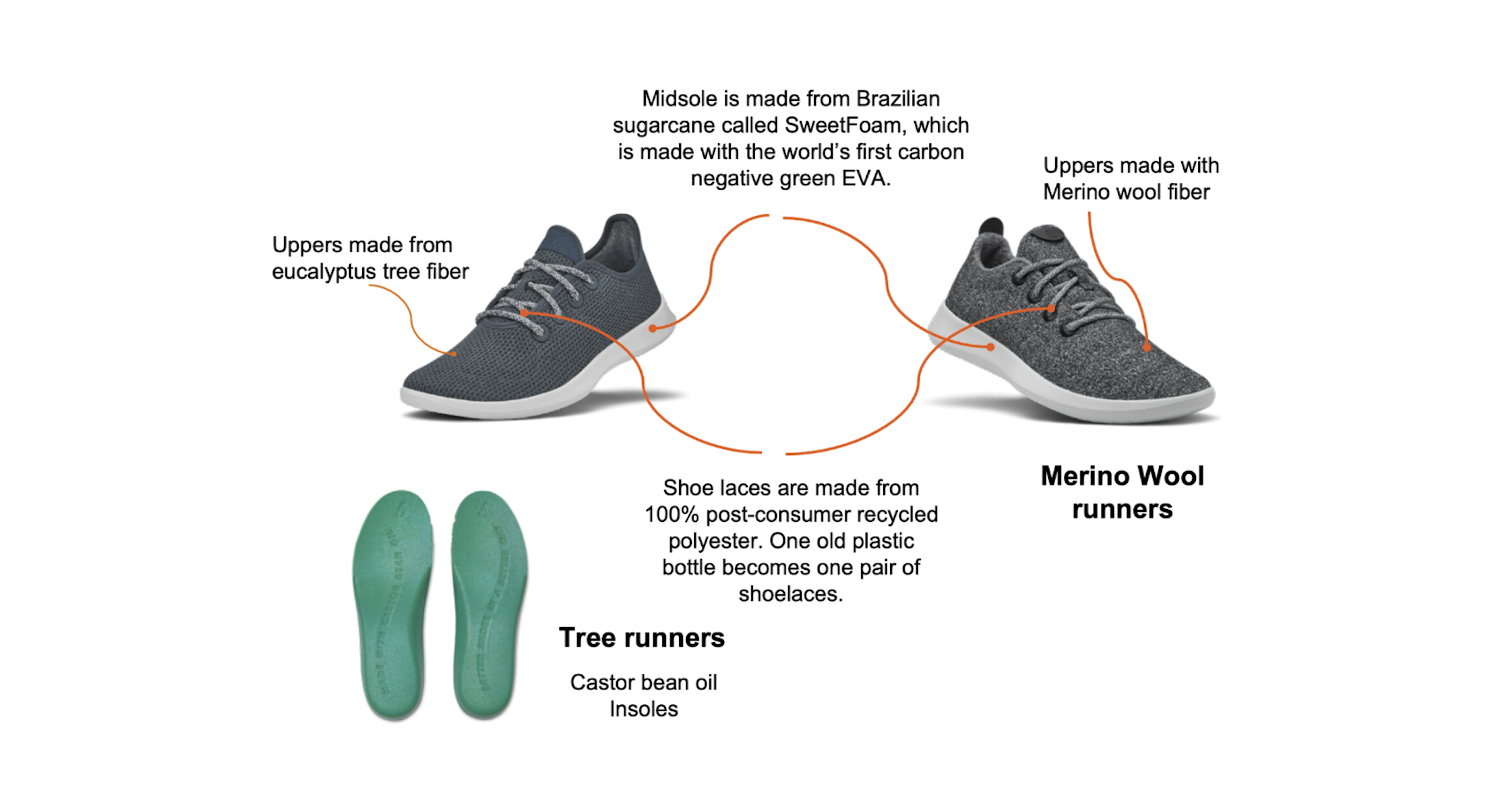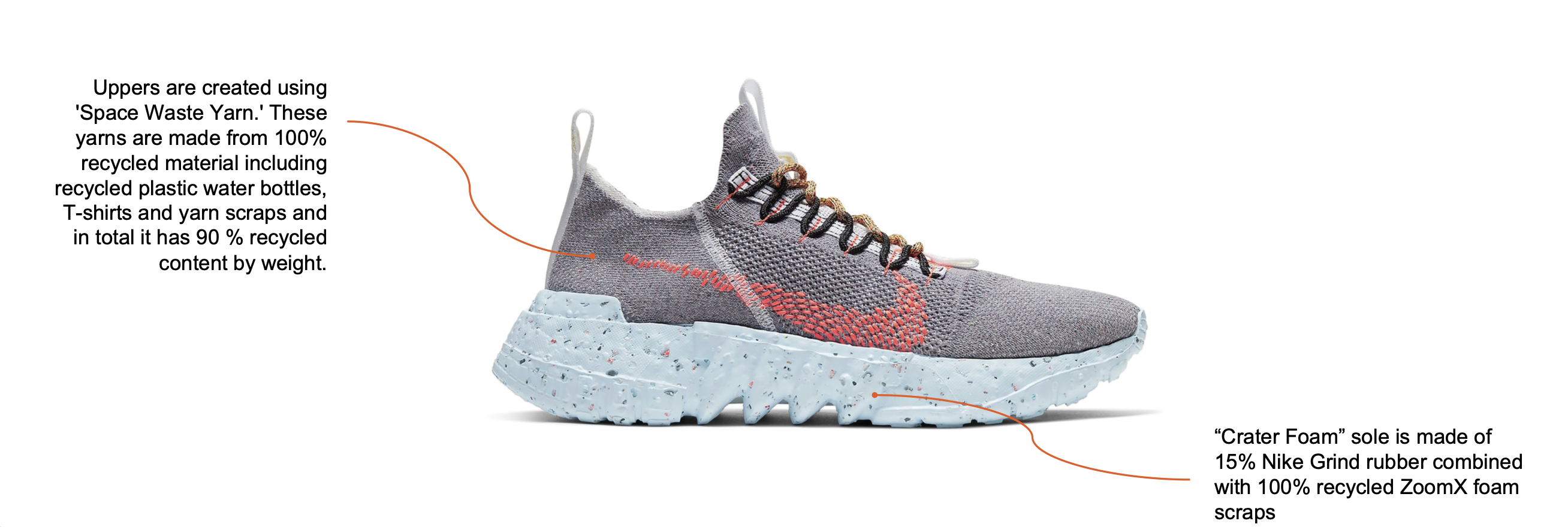What is Circular Economy?
Circular Economy in the fashion world, means considering every aspect of the business to reduce and eliminate wasteful practices and create timeless items that last and are used and reused before returning to the system to be remade again into something else. It’s about fully utilising materials and resources over the long-term period.
At the footwear innovation summit it was stated that 23.5b pairs of shoes annually for 7.6 billion people around the world. According to Reformation’s Impact Of Fashion report, footwear represents nearly 1/4th of the climate impacts and 97% of the impact of shoes happens during material processing and manufacturing. The first and last steps (manufacturing and disposal respectively) in the shoe life cycle are majorly polluting. Shoe manufacturing produces large amounts of carbon dioxide which contributes to the already serious effects of climate change and global warming.
Sustainability Challenges
Shoes are extremely hard to recycle. A lot of factors such as size, material, lack of recycle options and a complex design procedure, make it difficult to achieve sustainability. Footwear has around 40 different types of materials which makes the separation of materials and breaking them down for recycling very challenging.
According to Greensole, manufacturing a pair of shoes generates 30 lbs. of emissions; equivalent to leaving a 100-watt bulb burning for a week.
Natural materials decompose easily compared to others. For example, cotton takes about 6 months, leather requires 20 to 40 years, while PVC and EVA are around 35% of all shoe materials, globally, and they can take as much as 1,000 years to decompose.
Pillars of Circularity
- Circular design - Products should be designed to last longer and recycle/upgrade easily.
- Circular production - Efficient use of energy and water, production methods.
- Circular treatment - Decent working condition, ethical sourcing and supply chain management
- Circular traceability - Transparency and trackability in the value chain.
- Circular use - Using products in a way so that components and products lose their value as little as possible.
- Circular recovery - Recovery of materials by transforming existing products into new ones by adding value, reducing costs, or reducing waste.
Footwear brands are making efforts towards sustainability by shifting to recycled and eco-friendly materials as the damaging effects of the footwear production become more evident. Companies are designing a shoe without the unnecessary materials or features, choosing materials that fit within a circular economy and offering repair services that deal with wear and tear.
The use of recycled materials in footwear jumped 70% year-over-year in 2019. Mass market and sports brands have worked to change their traditional practices. New start-up brands start product life with this environmentally-friendly approach. Companies are making footwear in which various components can be replaced when worn out, resoled or just snapped together.
Another step towards circularity is changing the ownership of the product. The brand is the owner of the product and the customer leases it. Brands are taking ownership of their products by in-store take back programs, and are then responsible for down cycling the product after use. Companies are also moving towards sustainable supply chains. Brands have publicly shared the supply chain map with consumers which authenticate their claims of sustainability and ethical responsibility.
Allbirds
Allbirds is a sneaker startup that was born with sustainability in their material and design approach. It’s a New Zealand-American footwear company created by Tim Brown and Joey Zwillinger and is a certified B Corporation.
The company’s shoes are made with natural and biodegradable materials like merino wool, tree fibers, sugarcane, recycled plastic bottles, and caster bean oil, and their shoes are considered the world’s most comfortable shoes. The shoe boxes are also made from 90% post-consumer recycled cardboard.
As for its new initiative for 2020, the brand has become the first fashion brand to label every item produced with its carbon footprint. The standard sneaker emits 12.5 kg CO2e, whereas an average Allbirds shoe emits 7.6 kg CO2e, and going forward they aim to achieve zero carbon footprint for their shoes. Allbirds also take back their lightly used shoes and find new life for them with the help of ‘soles4souls’.
Veja

Veja is a French brand focused on ecological and fair trade footwear and accessories. It was founded in 2004 by Sébastien Kopp and Ghislain Morillion. Veja works with cooperatives of small producers and social associations in Brazil and France. Veja products are certified by both the Fair Labour Organisation (FLO-cert) and Instituto Biodinâmico for Rural Development (IDB). Sustainability, fair trade and transparency are the focal points of the company. Sneakers are made from ecological materials like organic cotton, vegetable tanned leather, recycled plastic bottles and natural rubber from the Amazon. Veja has been using “fish leather” from tilapia in their shoes. Usually discarded by freshwater fish farms, the skin gets upcycled through a handcrafted process involving vegetable dyeing.
Veja has launched a new facility in Darwin for their new project Veja x Darwin. The objective of this project is the cleaning, repair and recycling of the brand’s footwear to minimize waste and support the circular economy. The facility will collect and provide these services for worn out sneakers that are no longer suitable for use. This project will bring together never launched VEJA prototypes, sneakers with minimal defects at reduced prices and a few pairs of old collections.
Bottega Veneta
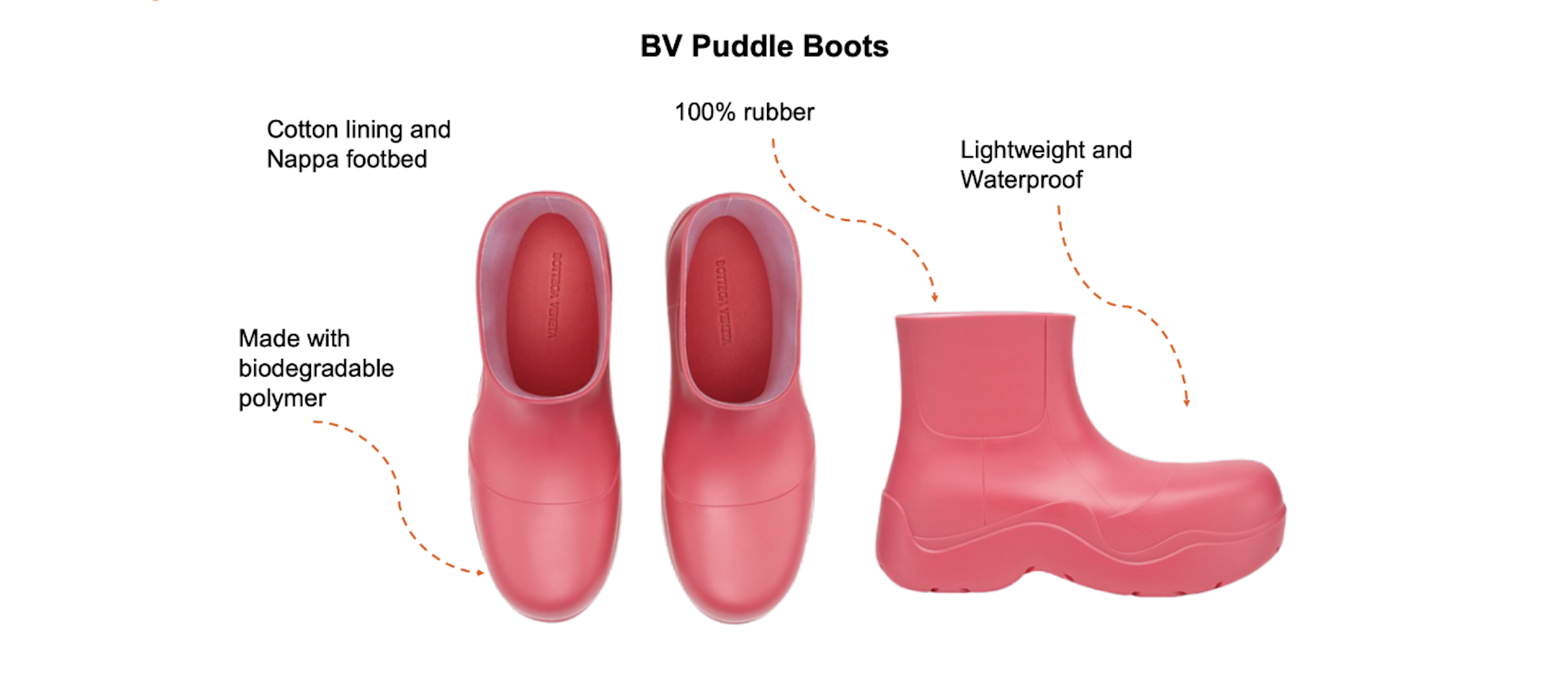
The Italian luxury house Bottega Veneta revealed their new sustainable shoe in their Fall Winter 2020 runway show. The shoes are unisex and are made of 100% biodegradable materials. These chunky shoes resemble clogs and are made from all plant based materials like sugarcane and coffee, which makes it easy to biodegrade quickly. Under the right conditions, the shoe can start decomposing after a year underground. This is a step towards sustainability for a brand associated and renowned for its leather products.
Gucci
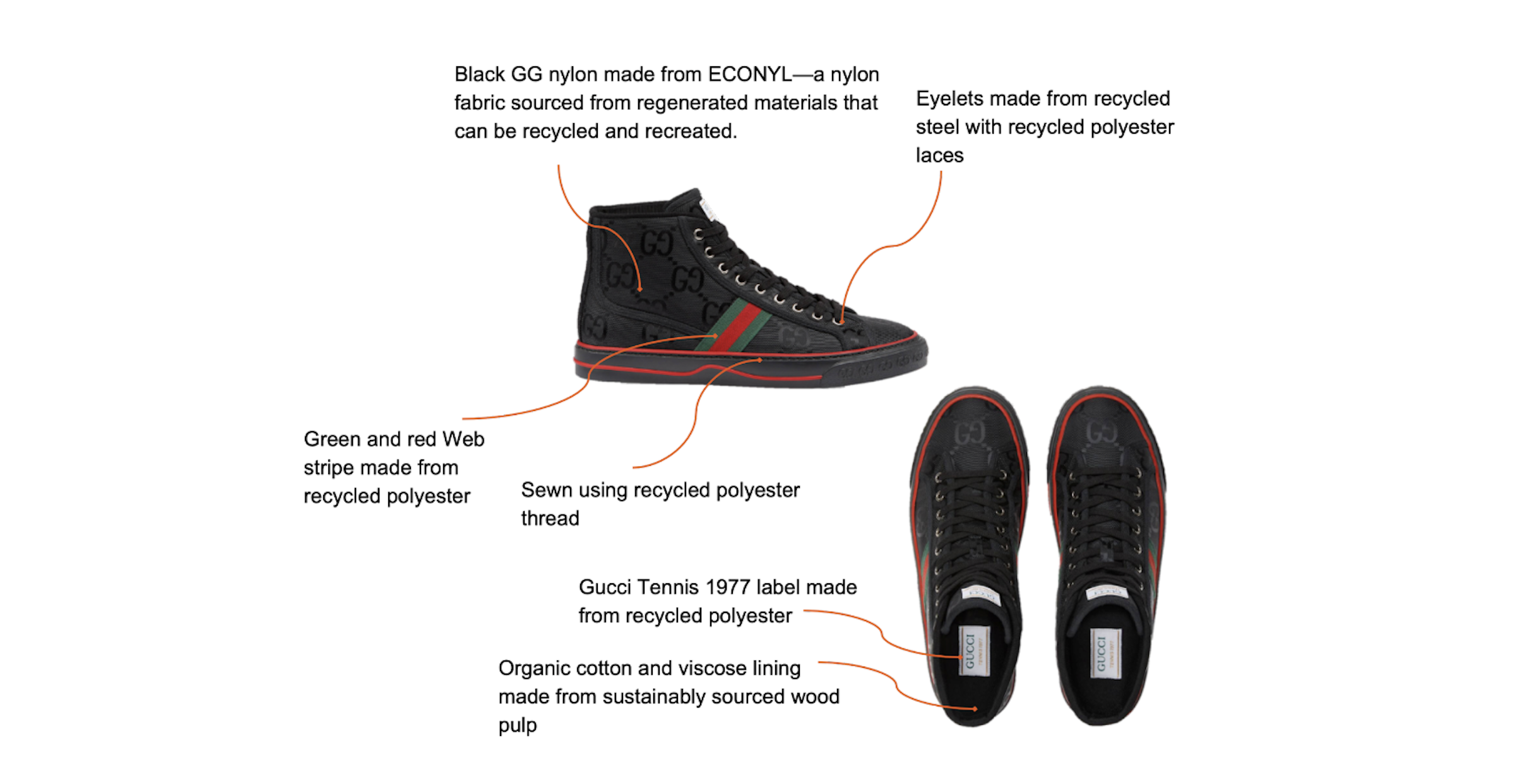
Gucci introduced its first sustainable footwear collection in 2012 with shoes made of bio plastic. The brand recently launched Gucci Off The Grid, a full fledged sustainable collection including footwear. The collection is made from naturally sourced materials and is a part of Gucci’s Circular Lines Initiative. The shoes are made from animal free materials and will be delivered with a FSC-certified recycled gift box, shipped flat, and recycled nylon flannel dust bag. Each Gucci Off The Grid product will be shipped with a dedicated booklet detailing the collection, printed on FSC-certified recycled paper.
Adidas

The collaboration between Adidas and Parley for the Oceans, a global pro-environment collective, was formed in 2015 under a goal to save the oceans, save the world
. The goal is summarised with 11M Parley’s simple acronym, AIR: Avoid, Intercept and Redesign. Together, the two companies are upcycling used plastic waste from beaches and coastal communities around the globe and are repurposing them to create high-performance Adidas sportswear and sneakers. The shoe silhouettes were re-designed with knitted uppers and decorative stitching made from recycled plastic and the outsole is crafted from recycled and re-ground rubber. This innovation represents the adidas commitment towards replacing virgin polyester with recycled solutions by 2024 wherever possible.
Nike
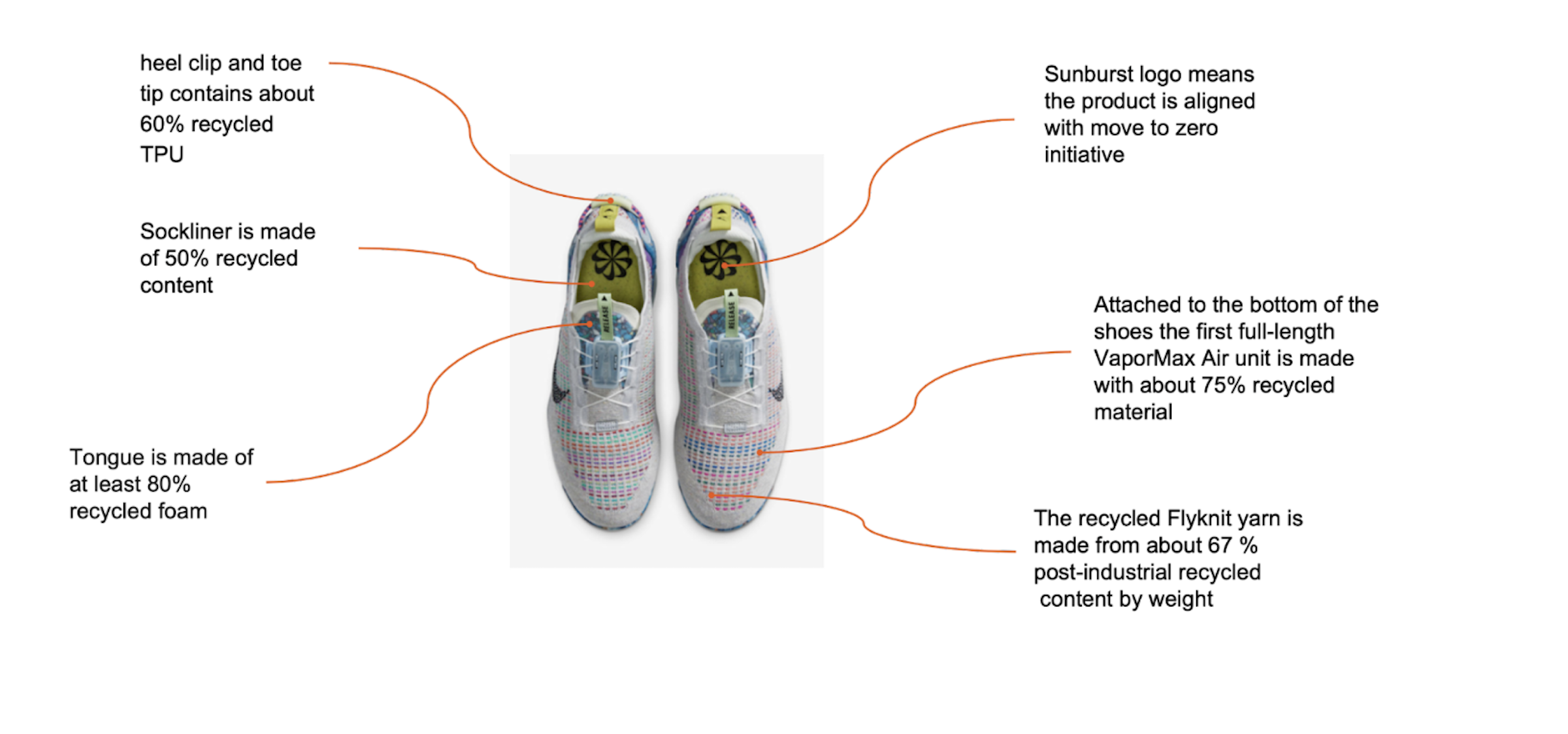
The Nike Air VaporMax 2020 Flyknit is one of Nike’s most sustainable shoes made till now by the brand and uses at least 50% recycled content by weight. This was made possible by applying circular design principles in its varied elements.
Nike Space Hippie is a footwear collection inspired by life on Mars where materials are scarce and there is no resupply mission. The collection is created using circular design principles and scrap material and comes in 4 different styles. This collection is the brand’s lowest carbon footprint collection till date.
Cover Image: Courtesy Adidas website
Article Images: Courtesy official websites of respective brands
